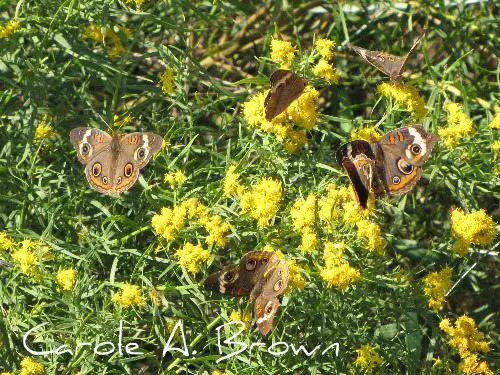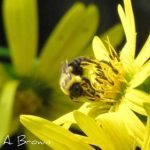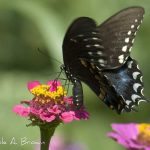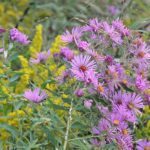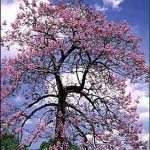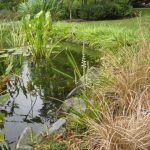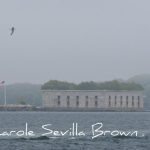Recently a good friend of mine, Genevieve Schmidt, shared a post I had written called The Human Equation in Nature (in which I posed the question “Is sustainability only about human benefit?”) on her Facebook page, and a very interesting conversation has ensued which I’ll share with you here because it raises some great questions that we all need to be thinking about. Please be sure to read the linked post so that you can see for yourself what I originally said (and what I did NOT say):
Gen:
A thought-provoking series of questions from Carole Sevilla Brown: Do permaculturists and others who promote sustainable gardening only care about human benefit, or should we also take care to think about wildlife?
Ivette:
I’m of the opinion that healthy, sustainable gardens good for people and wildlife can be created by mixing natives and non-invasive exotics. The idea that we have to return our cityscapes to native only spaces that remove all of the things that make designed urban and suburban outdoor landscapes gracious, useable, and beautiful is too radical, IMO. People are adaptable. Wildlife is adaptable. Natives-only landscape advocates always seem very conservative and extremist to me. So there!
Gen:
I agree in many respects, Ivette, but I think you may be setting up a bit of a straw man there. I have only met a few people who espouse a belief system as extreme as you pose. Most people advocating for expanded use of wildlife-friendly garden techniques and the use of native plants, Carole included, have much more nuanced beliefs. It’s easy to dismiss native plants and their very specific and irreplaceable role in supporting wildlife if we can position them as an all-or-nothing deal. That would only be attractive to a few people, and would certainly turn most of us off, as you point out.
I too appreciate a mixture of both natives and non-invasive exotics (and food), as I agree with you that a mix invites a deeper human connection that in the end, I hope, leads to better choices for the environment.
But the more I learn about the specific relationships insects and birds have with our region’s natives, the more I realize that just seeing the generalist birds and pollinators enjoying our gardens doesn’t mean we’re doing much for wildlife. Some of the specialist insects and birds that rely on specific natives can’t evolve as fast as we’re changing the land, so we either need to help out or take some responsibility for the loss of those species.
This has been a huge challenge for me as a designer, as most of my designed landscapes are still 80% exotics. It’s hard to find clear information about which natives make the biggest difference, and it’s tough sometimes to deal with the fact that many natives are short-lived or not as showy. But even though I’m finding it tough, I still think that increasing our use of natives is a worthy thing to strive for.
My response:
Ivette, I have never once said that we should have a “natives-only landscape” and I did not say that in this post either. Perhaps a closer reading of what I actually said may be helpful here.
I DO advocate very strongly to remove invasive plants, and would be thrilled if we stopped selling them, for these plants have done a lot of damage to wildlife habitat, our ecosystem services, and our natural areas.
Wildlife is adaptable yes. But changes used to take thousands of years. We are changing things so quickly now that normal evolution does not have a chance to keep up. Since native plants only make up less than 4% of our managed landscapes, I don’t think it’s too much to ask that we plant more of them.
Ivette:
I’m very sensitive to extreme nativism in horticulture – and yes, Carol (spelling hers), I could read closer, but I actually was having a knee-jerk reaction to the overall implication rather than the specifics of your article.
I use natives when designing large landscapes, but have also had to pull out all-native landscapes because of how ultimately unfriendly they are to a suburban homeowner here in Southern California. Many can’t take any summer water because they are dormant – and so when clients who have heard that they should plant natives come back to me asking why their plants are brown during the summer months when they want to be outside in the gardens they paid so much money for, I have to refer them to the reading material I give them telling them how natives behave in cultivation. They are never happy.
i appreciate the idealism, but in the end, I as a garden designer, strive to create balanced, sustainable gardens that meet my clients needs as well as “do no harm”.
On a more personal note – my garden is being overrun by crows, possums, and gophers. Are these considered “wildlife” and how should I deal with them? Are they an invasive species that I should remove the way I have removed my stipa tennuissima? I hate to use this cliche, but this too, is a slippery slope. One that shouldn’t be polarizing – I suspect the answer to the question we face is somewhere in between 2 extremes, as usual…
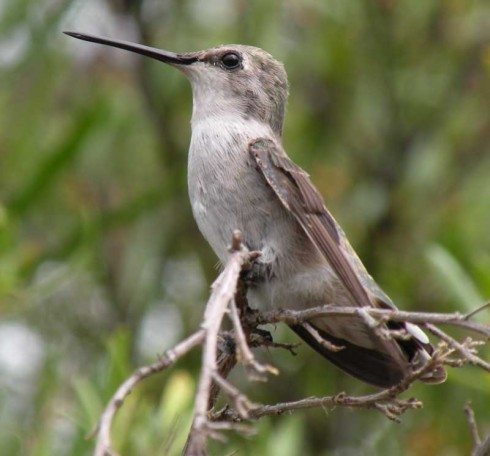
Because I think all of us can benefit from discussing these questions, I’m going to continue my part of this discussion here.
First, huge kudos to Gen who is finding ways to add more native plants into the gardens she designs for her clients. I know many garden designers have struggled with this, both from a “where do I find the native plants I want to use in my designs?” perspective, but also from a “how to I educate my clients about the value of native plants?” perspective as well.
Second, I’m trying very hard not to have my own “knee jerk reaction” to the “So There!” at the end of that response above. I’m also struggling not to react so strongly to being called an extremist for something that someone assumes I said or implied without actually reading the original article.
But let’s take a look at the questions posed in this exchange because there is much that each of us can learn from.
It is true that native plants make up less than 4% of our managed landscapes, and this number, for those of us who care about creating and restoring wildlife habitat, is the reason so many wildlife species are struggling.
The single most important thing we can do to help wildlife is to add more native plants to our landscapes. I can’t think of any reason at all that saying “add more native plants” makes me some kind of extremist, or even implies that I am telling anyone they need to have an “all native landscape.” I am, however an advocate of giving a little back to wildlife to counteract all we have taken away and destroyed.
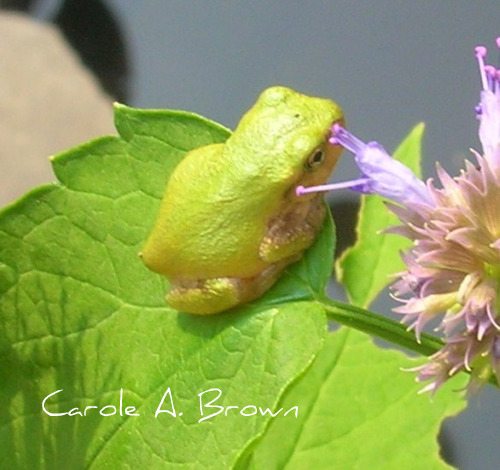
Yes, some species have adapted very well to the destructive actions we continue to inflict on wildlife habitat.
Loss of habitat is the number one cause for wildlife declines as we continue to chop natural areas into smaller and smaller pieces, destroy wildlife habitat, poison the earth with toxic chemicals, and strive to have a Walmart or Starbucks on every corner.
But some species like crows, opossums, gulls, raccoons (and cockroaches) have indeed adapted and because they are opportunists have thrived by taking advantage of living near us. These are the generalist species. These species are doing really well because of our own actions, and if we’re not happy about sharing our space with these species, maybe it’s time we took some responsibility for the consequences of our actions as a species. We’ve destroyed so much habitat and killed off all the top predators of our native food webs and some species have found ways to take advantage of this in ways that may not be so appealing.
But these species are not “invasive.” An invasive species is one that has been introduced from someplace else that is now causing ecological harm, not one that has successfully learned how to take advantage of living near us. Zebra mussels come to mind, or the wild pigs that were released in Hawaii that are now feral and wreaking havoc on that beautiful ecosystem.
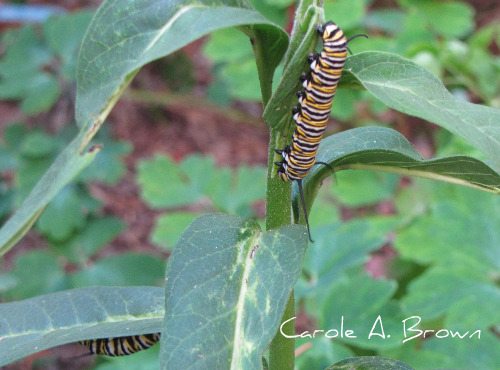
Personally, I do not want a world where those generalist species are the only ones that we’ll continue to see. There are so many other beautiful species of wildlife that are suffering because of our destruction, and I for one would be very sad to lose them!
These are the specialist species. And they require specific native plants and habitats for their survival.
As for native plants of California, there are so many wonderful resources available for information to find the right plant for particular situations. Like any gardening practice it is very important to place the right plant in the right place for the specific conditions at each site.
Here are a few to get started with:
My team member, Rob Moore, writes about designing with California native plants at his informative site California Native Landscape Design.
The Theodore Payne Foundation‘s mission is to preserve, propagate and promote California native Plants and Seeds and wild flowers since they provide beauty, habitat for wildlife and water savings.
The California Native Plant Society has many chapters around the state, so finding information for your particular area will not be difficult at all.
I am positive that by using these resources and the many others in California, it is possible to find native plants that are not “ultimately unfriendly to a suburban homeowner,” but are an asset because they create welcoming habitat for wildlife, and suburban homeowners will learn to share their space with the beautiful butterflies, birds, and other wildlife around us.
This is not just about California, either. Each of us can learn to make healthier choices for our gardens. We can learn to garden sustainably, conserve natural resources, and create welcoming habitat for wildlife so that we will attract more birds, butterflies, pollinators, frogs, toads, and other wildlife to share our space with us.
We can recognize that humans are not the only species that matters on this earth, and it is up to us to stop senselessly destroying their habitats, poisoning them, and making it very difficult for them to survive.
For me, it is learning to give something back. As a species we’ve destroyed so much wildlife habitat. We’ve chopped it up into smaller and smaller pieces so that very few species of wildlife can survive there. We continue to dump toxic chemicals onto our lawns and into our waterways. We have huge logging and mining operations in our national parks. We have a strange need to have a shopping center on every available open piece of land. We spew pollution from our cars and from some of our businesses.
Thus far, humans have been all about taking whatever they can, no matter the consequences to the other species who share our planet with us. For me it is more than time that we started giving something back.
We can do this. We really can make a difference for wildlife in our gardens. It is up to each of this to do as much as we can.
Now, for the first time in its history, gardening has taken on a role that transcends the needs of the gardener. Like it or not, gardeners have become important players in the management of our nation’s wildlife. It is now within the power of individual gardeners to do something that we all dream of doing: to “make a difference.” In this case, the “difference” will be to the future of biodiversity, to the native plants and animals of North America and the ecosystems that sustain them.
~Douglas Tallamy, Bringing Nature Home
Don’t know where to start? Check out the 5 Pillars of Ecosystem Gardening. Choose one area that interests you and just pick one small thing you can do that will help wildlife right away.
What are you doing to help wildlife in your garden?
More From Ecosystem Gardening:
Submit your review | |

